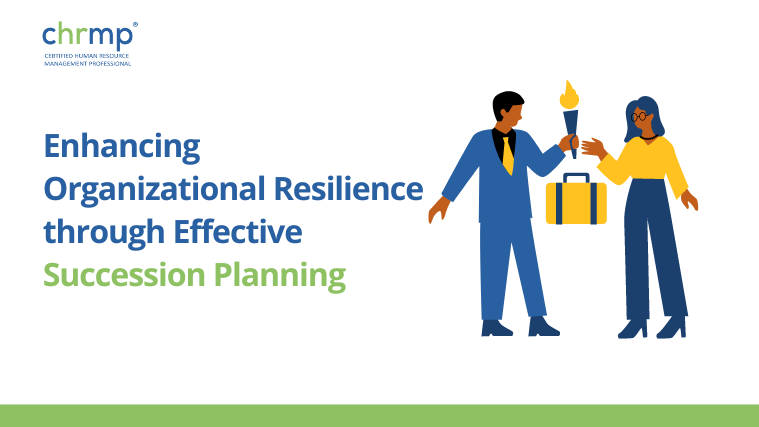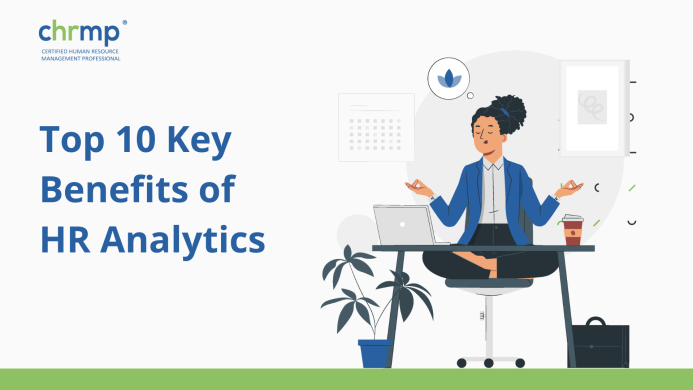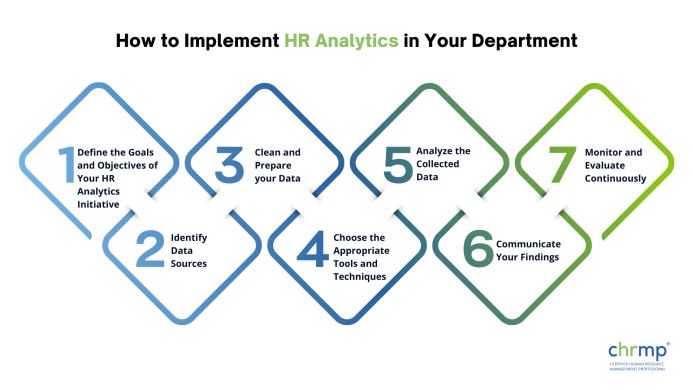

Companies are always searching for new ways to improve their functions to stay ahead of competitors. A great way to do so is by using HR analytics in the company to streamline processes.
HR Analytics is an excellent tool for HR professionals as it helps improve several HR functions by collecting and analyzing data on employee performance, turnover, recruiting and training costs, and other metrics.
Through HR Analytics, companies can gain valuable insights into their workforce and make enhanced, data-driven decisions that help improve overall performance throughout.
HR Analytics can significantly impact several areas, from identifying areas of improvement to measuring the effectiveness of HR programs and policies.
In this blog, we shall discuss the top ten key benefits of HR Analytics along with other relevant information.
Let’s jump right in with the most basic question:
HR analytics uses data and statistical techniques to analyze and comprehend HR-related data in various areas like employee turnover, recruitment, and workforce trends.
HR analytics aims to improve the company’s decision-making processes by identifying areas for improvement and measuring the effectiveness of HR programs and policies.
HR Analytics is an excellent tool for HR professionals, allowing them to make informed decisions about the workforce.
By analyzing data on critical aspects like employee performance, recruiting and training, turnover, and other HR-related metrics, companies can better understand their workforce and identify areas for improvement.

For example, by analyzing data on employee turnover, organizations can identify patterns and trends that can help them reduce turnover rates and improve their employee retention efforts.
In the same way, by analyzing data on recruiting and training costs, companies can identify ways to streamline their recruitment and training processes, cut down on high costs, and help companies identify best practices to apply in their daily routines.
By analyzing data from other companies, HR professionals can single out the most effective HR policies and procedures and implement them in their own company, improving the company’s overall performance and help gain an advantage over competitors.
If organizations can identify high-performing employees by regularly assessing and analyzing data on their performance, maybe on a monthly or bi-monthly basis and provide them with appropriate developmental training, that would help the organizations in retaining their top talent, rewarding them adequately, at the same time improve the overall employee performance.
HR Analytics is a vital tool for HR professionals to assess and improve employee performance with benefits ranging from employee turnover to improved communication skills and increased employee work satisfaction by accurately dispensing compensation and rewards.
The top ten key benefits of HR Analytics are:
1.Improved Decision Making
Organizations can make better decisions based on data available on their workforce, which, more often than not, delivers better results by employing HR analytics.
To better understand the workforce, organizations employ HR Analytics, which helps them identify areas of improvement, calculate adequate compensation and training costs to enhance employee performance and turnover, and improve their overall work satisfaction levels and other HR-related metrics.
2. Reduced Employee Turnover

With the help of HR Analytics tools, collecting and analyzing data on employee turnover becomes easy. This helps the companies recognize trends and patterns to increase employee retention and reduce employee turnover.
The collected data can help understand the reasons behind increased employee turnover and existing issues with the management or the company’s work culture.
With the help of HR Analytics, understanding the reasons behind increased employee turnover becomes easier. This enables the companies to take appropriate steps to correct the issue, create strategies to reduce the same and create a more positive and satisfying work environment.
Some strategies to correct employee turnover could be providing better training and developmental opportunities and addressing existing management and company culture issues.
3. Cut Down on Recruitment and Training Costs
Organizations need to streamline the recruitment and training processes by using HR Analytics to cut down costs.
Organizations need to reduce the time and resources spent on workforce recruitment and training and use them on other important areas.
4. Identify Best Practices
HR analytics can help organizations identify best practices.
Best practices in the industry and the most effective HR policies can be recognized by collecting and comparing data in competing companies and employing them in one’s organization. This could help the organization in staying competitive and improve overall performance.
5. Improve Employee Performance

Using HR Analytics, HR professionals can collect and analyze data on employee performance, identify high-performing employees and invest in additional training and development opportunities to improve employee performance in the company.
Using HR Analytics to improve employee performance can help organizations retain top talent and gain an edge over competitors.
6. Enhance Workforce Planning
With the help of HR Analytic tools, organizations can be helped to plan and identify future workforce shortages or surpluses.
Organizations can gauge their workforce more accurately if they analyze the data relating to their employee demographics, their career progression, and their job performances using HR Analytical tools to ascertain whether more employees are to be recruited or further training and development opportunities should be provided to the existing workforce to develop a more effective and efficient workforce.
7. Improve Compliance
Employee data needs to be analyzed by organizations to see that all their aspects comply with the relevant government laws, bylaws and regulations, which include work safety regulations, equal employment opportunity laws and other legal requirement laws.
Employee data analysis using HR Analytics can help determine areas at risk of non-compliance with the legal requirements to take remedial steps to address the issue well within time.
8. Increase Employee Engagement
Employee engagement data analysis can help organizations identify areas of employee disengagement and take appropriate steps to remedy the situation quickly.
Employee engagement is a vital indicator of employee satisfaction and motivation levels, directly related to employee turnover in the organization.
Employee engagement can be enhanced by working on better communication with the employees and providing them with better training and development opportunities.
9. Better Risk Management
Organizations can identify potential risks by analyzing employee data and taking steps to mitigate them. This can include developing contingency plans, providing additional training and development opportunities, or taking other steps to minimize risks, such as compliance issues, workforce shortages, or surplus issues.
10. Better Communication and Collaboration

By analyzing employee data, organizations can identify areas where communication and collaboration with the workforce can be improved, which will positively enhance organizational performance in the short and long run by reducing turnover and improving workforce performance.
Building better communication channels with the workforce, collaborating on a more significant level, and competitively better training and development opportunities are some steps to enhance organizational performance as a whole.
11. Helps build equitable compensation and benefits packages
HR analytics helps build equitable compensation and benefits packages by providing data-driven insights into employee performance, market trends, and industry standards. This enables organizations to make informed decisions regarding salary structures, incentives, and benefits, ensuring fair and competitive compensation practices.
12. Improves recruitment and talent acquisition efforts
HR analytics improves recruitment and talent acquisition by leveraging data to identify the most effective recruitment channels, assess candidate fit, and optimize hiring processes. It enables organizations to measure the success of their recruitment efforts, identify areas for improvement, and make data-backed decisions to attract and retain top talent.
13. Easier to conduct skills gap analysis
With HR analytics, conducting skills gap analysis becomes easier as it allows organizations to assess the existing skill sets of employees, identify areas for development, and design targeted training programs. This helps align employee skills with organizational goals, bridge competency gaps, and promote continuous learning and development.
14. Improved workplace safety
HR analytics plays a vital role in improving workplace safety by analyzing safety incident data, identifying patterns, and implementing proactive measures to mitigate risks. It enables organizations to monitor safety metrics, track compliance with regulations, and make data-driven decisions to create a safer work environment for employees.
15. Adds value to the business
HR analytics adds value to the business by providing insights and metrics that enable strategic decision-making. It helps HR professionals and organizational leaders identify areas for improvement, measure the effectiveness of HR initiatives, and align HR practices with overall business objectives. By leveraging data, organizations can optimize workforce productivity, drive employee engagement, and ultimately contribute to the overall success and growth of the business.

Often the terms HR Analytics, people analytics and workforce analytics are used interchangeably, but there are subtle yet significant differences between them.
HR analytics, People Analytics and Workforce Analytics are similar in that they involve data and analysis to help HR professionals understand and improve HR-related processes and outcomes to improve overall company performance.
However, HR analytics refers to using data and analytics to understand and improve HR-related processes and outcomes. It can include analyzing data on employee performance, turnover, recruiting and training costs, and other HR metrics.
On the other hand, people analytics is used for a broader area of analytics encompassing a wide range of data and analytics related to people and the workforce. This can include HR analytics but also includes other areas such as talent management, employee engagement, and culture.
Workforce analytics is the use of data and analytics to understand, predict and optimize workforce data, for example, forecasting workforce demands, employee skills, and workforce trends.
It is important to understand these three terms’ differences because they are often used interchangeably but have slightly different meanings. Understanding the difference can help organizations better understand the capabilities and limitations of different analytics approaches and use the right approach for their specific needs.
Additionally, organizations can use the right approach to make informed decisions, identify areas for improvement and measure the effectiveness of HR programs and policies, leading to better results.
HR Analytics can work wonders for your department if implemented correctly and has the power to positively impact several areas of your work.
That being said, here are a few steps you can take to implement HR Analytics in your department:

Before you start, it’s important to define the goals and objectives of your HR analytics initiative.
What specific HR-related issues do you want to address?
What insights do you hope to gain from your analysis?
Having clear goals and objectives will help you focus your efforts and ensure that your initiative is aligned with your organisation’s overall goals.
Identify all the data sources that will be needed to support your analysis. This may include data from HR, payroll, time-tracking, and other sources.
It’s important to have a complete and accurate understanding of the available data before you begin your analysis.
Before you can analyze your data, it needs to be cleaned and prepared. This may include removing duplicate data, correcting errors, and filling in missing data.
It’s important to take the time to properly clean and prepare your data so that your analysis is based on accurate and reliable information.
Select the appropriate tools and techniques for your analysis. This may include data visualization tools, statistical analysis software, or machine learning algorithms. Choosing the right tools and techniques for your specific goals and objectives is important.
Once your data is cleaned and prepared, you can begin your analysis. Use the tools and techniques you’ve chosen to uncover insights and identify patterns and trends in your data.
Communicate your findings to key stakeholders in your organization. This may include HR leaders, managers, and employees. It’s important to present your findings in a clear and concise manner and to make recommendations for how your organization can use the insights you’ve uncovered to improve HR-related processes and outcomes.
Continuously monitor and evaluate your HR analytics initiative to ensure that it is meeting your goals and objectives. Use the insights you’ve gained to make ongoing improvements to your HR processes and policies.
An HR Analytics Solution is a software or platform that organizations can use to collect, analyze and interpret data related to their human resources function, like employee turnover, recruitment, and workforce trends.
It allows organizations to make data-driven decisions, identify areas for improvement, and measure the effectiveness of HR programs and policies.
An HR analytics solution can provide organizations with valuable insights into their workforce, allowing them to make data-driven decisions about their HR processes and policies. By analyzing data on employee performance, turnover, recruiting and training costs, and other HR-related metrics, organizations can identify areas for improvement and make changes to their HR processes and programs.
Additionally, an HR analytics solution can help organizations identify best practices in the industry and implement them in their own organization. By investing in an HR analytics solution, organizations can improve their bottom line by effectively managing their workforce.
In conclusion, investing in an HR analytics solution can be a valuable decision for organizations, as it can provide them with valuable insights into their workforce, allowing them to make data-driven decisions about their HR processes and policies.
It is important to define the specific HR-related issues that you want to address, research and evaluate different solutions, choose the right one that fits your organization’s needs and budget, implement it and monitor and evaluate its performance.
1. Are there any benefits of implementing Talent HR analytics within the HR system?
Implementing Talent HR analytics within an HR system can provide organizations with a number of benefits, including improved decision-making, reduced employee turnover, reduced recruitment and training cost, and improved employee performance, among several other benefits.
2. How beneficial is it to take up an HR analytics certification?
Taking an HR analytics certification can be beneficial for an HR professional. Certification can demonstrate a level of expertise and knowledge in the field of HR analytics and can be used to advance career opportunities. Additionally, it can provide a comprehensive understanding of the field and how to use data and analytics to improve HR processes and outcomes, which can be applied in day-to-day work.
3. What is the scope of an HR analytics course for an HR professional?
An HR analytics course can provide an HR professional with a comprehensive understanding of the field of HR analytics and how to use data and analytics to improve HR processes and outcomes. The course content may include:
In conclusion, HR analytics is a powerful tool that can provide organizations with valuable insights into their workforce and help them make data-driven decisions about their HR processes and policies.
From identifying areas of improvement to measuring the effectiveness of HR programs and policies, HR analytics can significantly impact an organisation’s success.
The top 15 key benefits of HR analytics, as discussed in this blog, include:
Organizations of all sizes and industries can achieve these benefits and can help them stay competitive in today’s fast-paced business world. It is important to invest in an HR analytics solution that fits your organization’s needs and budget and continuously monitor and evaluate the performance of the solution.

Grab Your 25 Free Email Templates Now